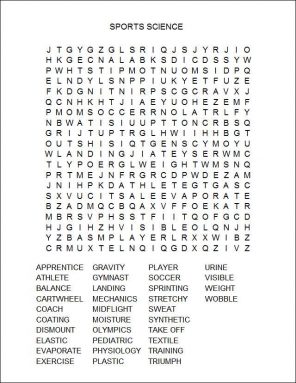Cool Jobs: Sports science
From soccer teams to the balance beam, scientists help athletes perform their best
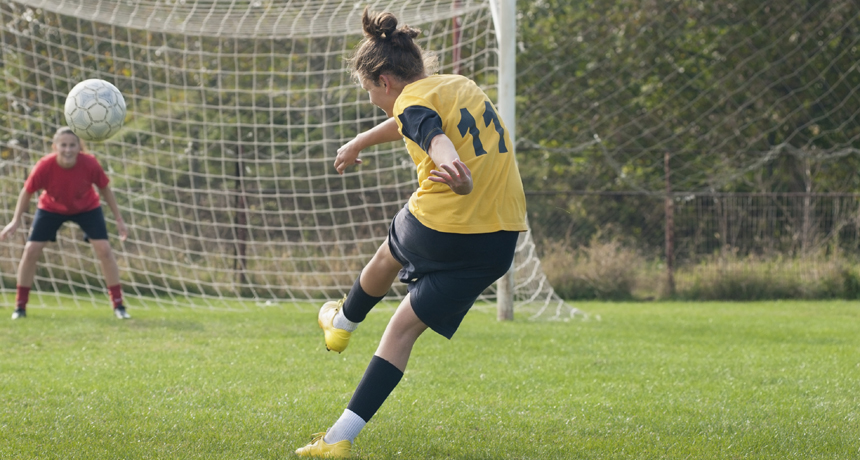
Sports scientists use cutting-edge research to help athletes stay at the top of their game.
fotokostic/iStockphoto
By Helen Fields
A teenager wearing a white leotard emblazoned with a big blue star pauses at the end of the balance beam. After 80 seconds of leaps and flips, it’s time to perform one of the hardest parts of her routine: the dismount.
The gymnast reaches her arms high and then takes off running. She cartwheels to the far end of the beam and springs into the air. She spins, lands squarely on her feet and raises her arms in triumph. The stadium fills with cheers. A great performance followed by a great landing. It was just the thing to win the girl, an American gymnast named Shannon Miller, a gold medal in the 1996 Olympic Games.
Normally, when you send something spinning through the air — such as a ruler or a pen — it doesn’t land perfectly on end. But that’s what a gymnast must do: land cleanly on her (or his) feet, even after twisting and turning through the air.
Perfect landing
Watch Shannon Miller perform on the balance beam in the 1996 Olympic Games.
Jill McNitt-Gray studies how gymnasts do this. At the University of Southern California, in Los Angeles, she works as a biomechanist. That means she’s an expert in how living things move. And to do gymnastics, she explains, even though you don’t know it, “you’re learning mechanics.”
Hers is just one field where science and sports meet. In fact, there are a huge variety of scientists who study sports. Besides McNitt-Gray, you will meet two others here. All three use cutting-edge research to help athletes stay at the top of their game.
Stuck, with science
McNitt-Gray has plenty of experience flying through the air. A gymnast throughout her teens, she’s now an expert in helping new generations of these athletes land on their feet.
Using high-speed video taken at two summer Olympics, McNitt-Gray and her coworkers have analyzed how gymnasts sail through the air — and then stick their landings. The point of high-speed videos is to play them back verrrrry slooooowly. That allows the viewer to follow a gymnast’s every move.
In this sport, landings are very important. Judges take off fractions of a point if a gymnast wobbles, takes a step or even squats upon landing. And when a gymnast falls or fails to land feet first, well, that can cost a whole point — and likely a spot on the winners’ podium. So each gymnast wants to land firmly, balanced and upright — without waving an arm or taking a step.
The airborne path to that landing depends on two things: the takeoff and gravity. Once the athlete jumps, all a gymnast can alter is how the body is arrayed and oriented. Luckily, even upside down, half a turn from the end of a jump, a gymnast can still adjust a landing. “You still have enough time to move to put yourself in the right position,” explains McNitt-Gray.
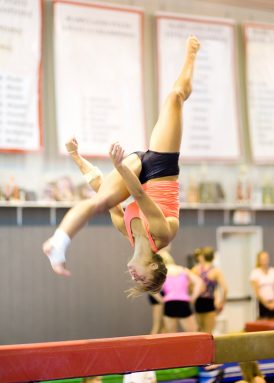
To rotate faster, a gymnast will draw in her arms. To slow down a turn, she can raise those arms over her head. An ice skater does the same thing. Bringing in the arms will speed up a spin; extending them slows it down. It’s all a matter of physics. How the mass of an object is distributed will affect how fast it rotates.
When gymnasts make the correct mid-flight adjustments, they can safely slam their weight into the ground. “You just have to be ready to handle it,” McNitt-Gray says.
Coaches use her research to help gymnasts safely stick their landings. Carefully watching a particular athlete’s technique can lead to suggestions, such as jumping a moment sooner or shifting the body’s weight a tad more in one direction.
McNitt-Gray works on other sports too. She has helped divers enter the water smoothly and cleanly. Her analyses have aided tennis and golf players so that they can get their best swing at the ball. She has even studied how dental hygienists and professional cellists hold themselves when they work. “It’s all about using your muscles,” she explains.
On the field
On weekends, Thomas Michaelis sees his work at play. He works for Bayer AG in Leverkusen, Germany. This huge company makes chemicals and medicines — and owns a soccer team. Called Bayer 04 Leverkusen, that team plays in the top German soccer league. Michaelis supports his company’s team, and not just as a fan. Every time a player kicks or heads the ball, he touches this researcher’s work.
Michaelis started working at Bayer when he was just 16. Beginning as an apprentice in a chemistry lab, he learned how to analyze the dyes used to color fabrics. Sometimes the dyes didn’t take evenly. The fabric’s coloring ended up blotchy. To find out why, the young Michaelis had to perform work that he now likens “to a forensic inspection.” He would compare the normal “and blemished parts to check which additive, product or impact caused the problem.”
He loved this testing — so much so that he stayed on at the company. Today, he’s in charge of textile coatings. Textiles are fabrics. Coatings are thin layers that can cover a textile’s fibers, altering how they behave. His work continues to involve plenty of testing and problem-solving.
The coatings Michaelis has been developing have begun showing up on soccer balls. Once covered in leather, these balls now have a plastic surface that acts like leather — only better. His goal: a surface that improves the ball’s performance, including its speed.
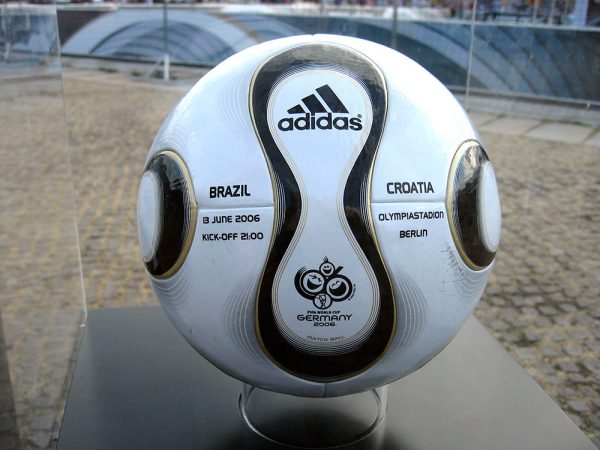
For example, the sports equipment and clothing company Adidas designed a new soccer ball for the 2006 World Cup in Germany. Just 14 separate pieces went into making each ball. Until then, 32 pieces had been standard.
To improve the new ball’s surface, Adidas asked Bayer MaterialScience, where Michaelis works, to design a new coating. Rain can waterlog a ball during play, slowing and weighing it down. The sports company wanted a new surface to keep out that moisture. The solution that Bayer came up with also protects logos printed on the ball so that they’re still visible after 90 minutes of hard play. And a new foam underlayer allows the ball to quickly spring back to its initial round shape after each kick.
Adidas has begun adding another new Bayer coating, called Impranil, to some clothing, including soccer jerseys. The stretchy coating is a type of plastic (polyurethane) made by cross-linking chains of molecules.
When Michaelis first showed a version of it to Adidas officials, they were impressed. Adidas scientists had recently developed a stretchy new fabric and needed an equally stretchy coating to go on it. This coating would need to not only help make the fabric more elastic, but also carry printed designs.
Michaelis took some of the Adidas fabric back to his lab. There his team began adding the plastic as a test coating. Adidas scientists found the first few test samples that Michaelis provided were not quite what they had in mind. So the Bayer team kept experimenting. After examining each new version, experts at Adidas would make a few suggestions. The researchers at Bayer would then tweak their coating some more.
Eventually, the group Michaelis led found a way to make their Impranil work for the sports clothing. Items made from this coated fabric are now marketed in stores as Techfit.
Techfit clothes cling tightly to the body, but stretch and move with a player’s muscles. Ironically, because most soccer players prefer a looser top, only one player on Bayer 04 Leverkusen wears a Techfit jersey, Michaelis says.
But Techfit does have its fans. The material has become popular with athletes who compete in sprinting and jumping. Michaelis says he’ll keep a look out for the fabric when watching track and field events in the next summer Olympics.
If Michaelis had worked at Bayer 100 years ago, he could have played on the company’s sports team. No longer. Today those players are all professionals. Still, this chemistry researcher is “a bit proud,” he says, “to see the players on the field with Bayer products, which I have spent a lot of time on.”
Perfect 10
In this video, Jill McNitt-Gray explains the role science plays in helping divers perform perfectly.
Sweat science
When it comes to how bodies respond in sports, there can be a lot of difference between adults and kids — besides their size. Craig Williams at the University of Exeter in England should know. He is among only a few hundred scientists in the world who collect data from children as they exercise.
This new field is called pediatric exercise physiology.
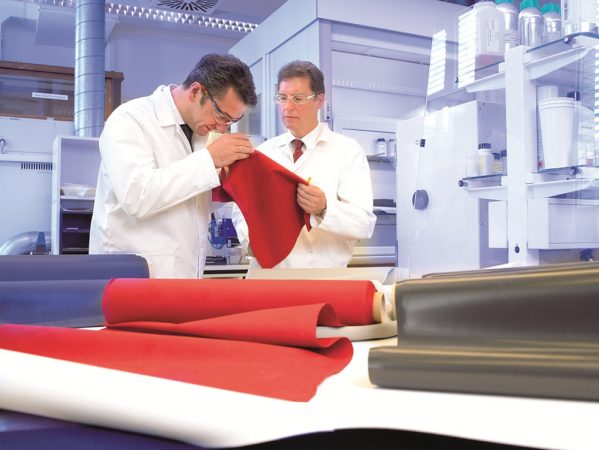
Physiology is the study of how living systems grow and operate. Kids develop at different rates from one another and sometimes in different ways. This new field of science is also showing that in terms of physiology, kids aren’t just little adults. In the past, scientists often thought of them that way. Williams said many attempted to understand kids by “using adult data and just scaling it down.” But that could prove unreliable. Kids may sweat at different rates from adults or need different amounts of certain nutrients to sustain their strength and stamina during periods of rapid growth.
Williams often gets his research questions from coaches. For example, those at one soccer academy in southwest England worried their players were losing too much moisture during practice. So the coaches asked Williams to find out if the players were drinking enough fluids to replace all of the water being lost as sweat.
To answer that, Williams led a research team that studied players before and after soccer training. They weighed each 16- to 18-year-old before and after his 100-minute practice. They weighed each athlete’s water bottles before and after, as well. Those measurements would reveal how much water each player sweated away — and how much fluid he drank to make up for this.
The scientists also collected urine from each boy before and after his practice.
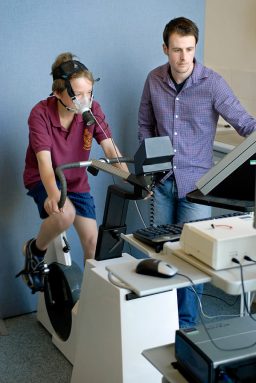
Urine can tell you a lot, Williams notes. When it’s dark, it can signal a player is dehydrated. Light, straw-colored urine tends to indicate the body has plenty of water, meaning it is well hydrated.
The outside temperature had been cool when the boys practiced, only about 11 degrees Celsius (52 degrees Fahrenheit). Still, the players sweated plenty. Each lost a volume of fluids that weighed, on average, 1.1 kilogram (2.4 pounds). And while most boys began their training day dehydrated, they drank enough during practice to finish fully hydrated.
Today, athletes tend to understand some impacts of sweating. Certainly, Williams says, most “have gotten the message that they need to think about replacing the water.”
When you sweat during exercise, that water evaporates from your skin, cooling the body. If there isn’t enough water in the blood, athletes can’t sweat efficiently, which means they might not be able to maintain a steady body temperature. And that can be dangerous, especially in hot weather.
In cool weather, a little dehydration won’t be dangerous. Still, Williams recommends drinking plenty of water then, as well. After all, some research suggests that dehydrated athletes do not think as clearly or perform as well as they might otherwise. For boys attending a soccer academy, dehydration could cut the odds that they perform well enough to impress professional scouts.
Luckily, Williams found, most of the boys that he studied seemed to be faring well. They lost a lot of fluids during play, but also replaced them along the way by drinking.
There were, however, exceptions. A few boys drank no water during practice. Through this study, Williams says, he was able to show coaches how well most of their players stayed hydrated — and signs that some weren’t.
Most people aren’t like those young soccer players, who are hoping to sign contracts with professional teams. You need commitment, stamina and the right body to be a pro. But there are plenty of other ways to make sports a career. As Michaelis, McNitt-Gray and Williams show, science can offer one way to make sports your life’s work.
Power Words
biomechanics The study of how living things move.
cross-link A connection that holds together two long molecules.
dehydrate To lose a large amount of water.
dismount In gymnastics, the final deliberate move made to get off of the balance beam, uneven bars or some other apparatus.
hydrate To restore the proper level of fluids in the body.
mechanics The study of how things move.
molecule The smallest possible unit of a substance.
pediatrics Relating to children and especially child health.
physiology The study of how living things and their parts function.
polyurethane An often elastic plastic made from crosslinked chains of molecules.
textile Cloth or woven fabric.
Word Find (click here to print puzzle)
This is one in a series on careers in science, technology, engineering and mathematics made possible by support from the Northrop Grumman Foundation.
